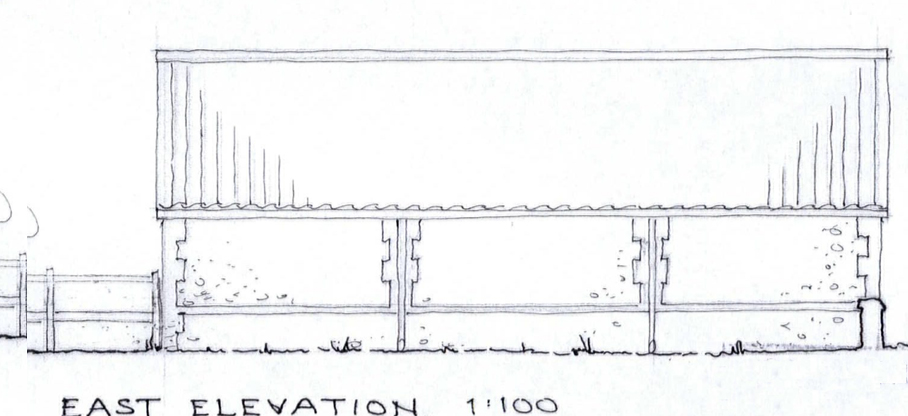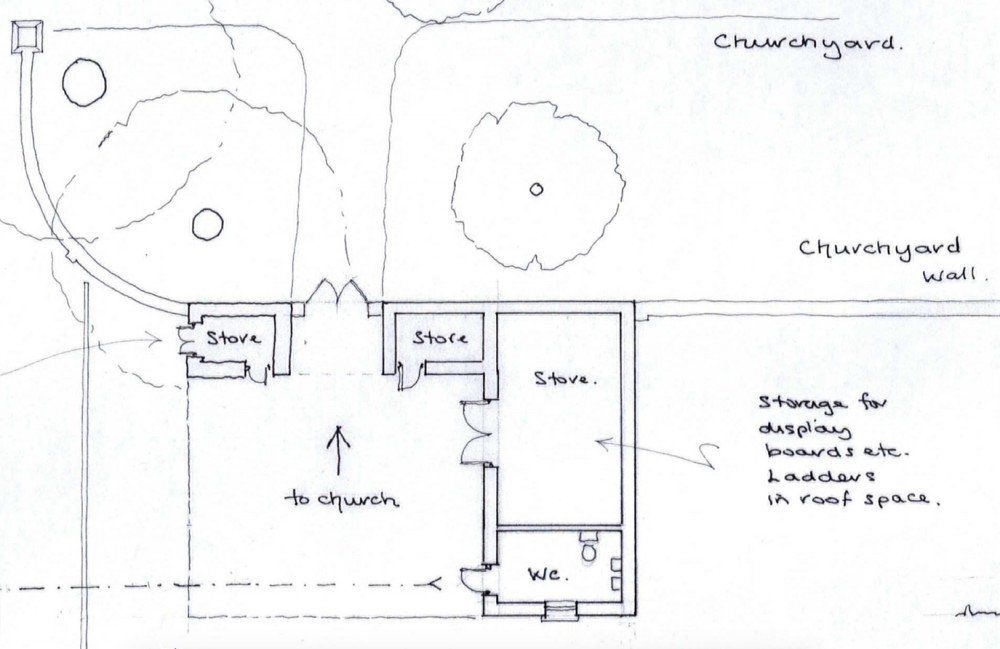The Gas House Project

Pictured above is the former Acetylene Gas House, built circa 1914 to house the generating plant required to produce gas to light the church. This is now very dilapidated and in need of renovation before it decays too far.
In addressing the plight of this building, a scheme has been formulated to create a new entrance to the church through the wall to the right of the building. This is to be covered by an extended gas house roof to link to a matching building to the right of the new entrance, which in turn is extended at right angles into the glebe to form a building to house a store room and toilet. The architect's drawings (copyright Birdsall Swash and Blackman) below have been accepted by NNDC and form part of the planning application which has already been granted
Viewed from the South, as the photo above, the proposal is for the following:

The other elevations are as follows:



The suggested floor plan:

In order to keep the considerable costs to a minimum, appeals for materials in the form of good secondhand roof-tiles, flint and brick have received a generous response and after an initial sorting it would seem that we have sufficient good tiles for the entire building, already a substantial quantity of the estimated 12 tonnes of stone required for the intended solid flint walling and a good start towards the Norfolk Red facing bricks. It is hoped that as much volunteer labour as is feasible in the course of construction will also help to keep down costs.
A portion of the glebe field is to be licensed for use as a car park. Starting to the left of the existing entrance gates, the area will be enclosed by hedge and fencing in a line running parallel to the full length of the existing South churchyard wall and returning to the South East corner of the churchyard. The estimated costs of creating a natural surface that would enable year round use would seem a disproportionately high percentage of the project's costs so we will be looking for ways to make savings on this aspect of the project.
The civil engineering costs for the provision of sewer and electicity connections will probably be the hardest on which to economise, as too the costs for the archaeological monitoring required in this "heritage sensitive" area of the village.